
Ruins of Adventure is a Dungeons & Dragons module that was based on the "Gold Box" role-playing video game Pool of Radiance, published in 1988 by Strategic Simulations, Inc. (SSI). Mike Breault stated that TSR chose him, Winter, Cook, and Ward to work on the design and writing for Pool of Radiance, indicating that the material was originally created for the game. However, according to the editors of Dragon magazine, Pool of Radiance was based on Ruins of Adventure, and not vice versa. The plot loosely tracks that of the computer game.

Ravenloft is an adventure module for the Dungeons & Dragons (D&D) fantasy role-playing game. The American game publishing company TSR, Inc. released it as a standalone adventure booklet in 1983 for use with the first edition Advanced Dungeons & Dragons game. It was written by Tracy and Laura Hickman, and includes art by Clyde Caldwell with maps by David Sutherland III. The plot of Ravenloft focuses on the villain Strahd von Zarovich, a vampire who pines for his lost love. Various story elements, including Strahd's motivation and the locations of magical weapons, are randomly determined by drawing cards. The player characters attempt to defeat Strahd and, if successful, the adventure ends.
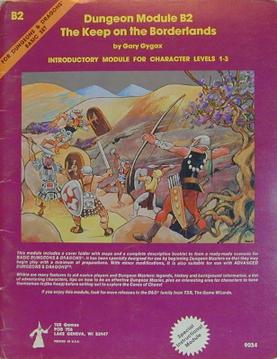
The Keep on the Borderlands is a Dungeons & Dragons adventure module by Gary Gygax, first printed in December 1979. In it, player characters are based at a keep and investigate a nearby series of caves that are filled with a variety of monsters. It was designed to be used with the Dungeons & Dragons Basic Set, and was included in the 1979–1982 editions of the Basic Set. It was designed for people new to Dungeons & Dragons.

Oriental Adventures is the title shared by two hardback rulebooks published for different versions of the Dungeons & Dragons (D&D) fantasy roleplaying game. Each version of Oriental Adventures provides rules for adapting its respective version of D&D for use in campaign settings based on the Far East, rather than the medieval Europe-setting assumed by most D&D books. Both versions of Oriental Adventures include example campaign settings.
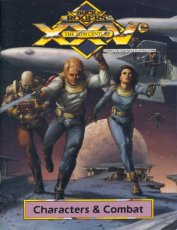
Buck Rogers XXVC is a game setting created by TSR, Inc. in the late 1980s. Products based on this setting include novels, graphic novels, a role-playing game (RPG), board game, and video games. The setting was active from 1988 until 1995.

Scourge of the Slave Lords (A1–4) is an adventure module for the Dungeons & Dragons fantasy role-playing game, published by TSR, Inc. in 1986. It combines the contents of four earlier modules, all set in the World of Greyhawk campaign setting and intended for use with Advanced Dungeons & Dragons first edition rules.

Douglas Niles is a fantasy author and game designer. Niles was one of the creators of the Dragonlance world and the author of the first three Forgotten Realms novels, the Star Frontiers space opera setting and the Top Secret S/I espionage role-playing game.

Descent Into the Depths of the Earth is an adventure module for the Dungeons & Dragons (D&D) fantasy roleplaying game coded D1–2. It was written by Gary Gygax, and combines two previously published modules from 1978, the original Descent into the Depths of the Earth and Shrine of the Kuo-Toa. A sequel to the first two modules, Vault of the Drow, was also published in 1978. All of these D-series modules were produced for use with the 1st edition Advanced Dungeons & Dragons (AD&D) rules.
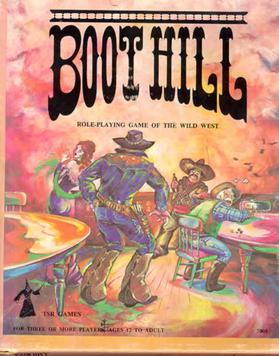
Boot Hill is a western-themed role-playing game designed by Brian Blume, Gary Gygax, and Don Kaye, and first published in 1975. Boot Hill was TSR's third role-playing game, appearing not long after Dungeons & Dragons (D&D) and Empire of the Petal Throne, and taking its name from "Boot Hill", the popular Wild West term for "cemetery". Boot Hill was marketed to take advantage of America's love of the western genre. The game did feature some new game mechanics, such as the use of percentile dice, but its focus on gunfighting rather than role-playing, as well as the lethal nature of its combat system, limited its appeal. Boot Hill was issued in three editions over 15 years, but it never reached the same level of popularity as D&D and other fantasy-themed role-playing games.
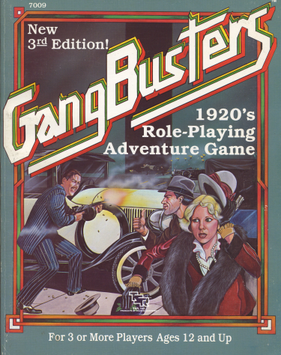
Gangbusters is a roleplaying game published by TSR, Inc. in 1982 that emulates gang crime in the 1920s during American Prohibition.

James Bond 007: Role-Playing In Her Majesty's Secret Service is a spy fiction tabletop role-playing game based on the James Bond books and films. It is designed by Gerard Christopher Klug and was published by Victory Games, a subsidiary of Avalon Hill. The game and its supplements were published from 1983 until 1987, when the license lapsed. At its time of publication, it was the most popular espionage role-playing game.
The DL series is a series of adventures and some supplementary material for the Advanced Dungeons & Dragons role playing game. These modules along with the Dragonlance Chronicles trilogy of novels, which follow one possible adventure series through the modules, were the first published items that established the Dragonlance fictional universe. The original DL series was released from 1984 to 1986, with the final two modules added to it in 1988. In the 1990s these roleplaying adventures from the original series were collected and revised for 2nd Edition AD&D as the three DLC Dragonlance Classics modules. There were also versions of the module series released in 1999, 2000 and 2006.

Conan Against Darkness! is a 1984 adventure module for the first edition of the Advanced Dungeons & Dragons fantasy roleplaying game, set in the Hyborian universe of Robert E. Howard's character Conan the Barbarian. It is designed for four player characters at character level 10-14 and uses some minor rule variations in an attempt to recreate the setting's atmosphere. It was publicized as containing a "journey of epic proportions".
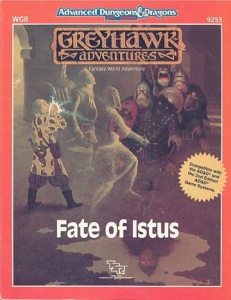
Fate of Istus is a multipart adventure for the Dungeons & Dragons roleplaying game, taking place in the World of Greyhawk campaign setting. The module is designed for characters of any class or level, and was published as an in-game vehicle to explain the transition from the game's first to second edition. This is accomplished by goddess Istus's re-evaluation of the inhabitants of Oerth and making changes to the abilities of each character class.
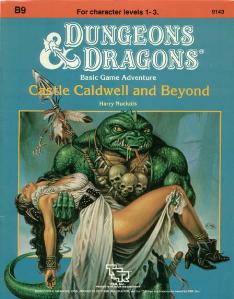
Castle Caldwell and Beyond is an adventure module published by TSR, Inc. in 1985, for the Basic Rules of the Dungeons & Dragons fantasy role-playing game. Its product designation was TSR 9143.

Ghost of Lion Castle is a 1984 adventure module for the Dungeons & Dragons fantasy roleplaying game. Its module code is BSOLO, and it was written by Merle M. Rasmussen with cover art by Bob Maurus.

The Sentinel is an adventure module for the Dungeons & Dragons fantasy role-playing game, set in World of Greyhawk campaign setting.

Agent 13: The Midnight Avenger was the name of a novel series based on Top Secret/S.I. setting published by TSR, Inc. from 1986 to 1988. There were three stories in the series, following the actions of the protagonist referred to in the novels only as Agent 13, or simply, The Agent. It was written by Flint Dille and David Marconi.
Merle Martin Rasmussen is an American game designer and writer known for creating the espionage role-playing game Top Secret.




















